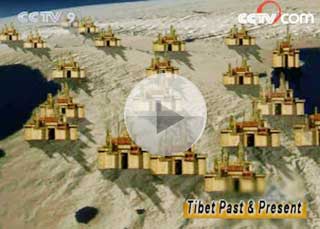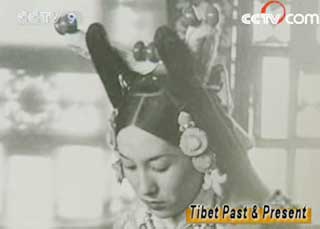------Program code: DO-080504-03732 (what's this?)
Source: CCTV.com
05-04-2008 14:08
Tibet Theocracy
The theocratic system by which religion and politics were combined in Tibet, could be described as a dictatorship by the monks and aristocrats. A similar dictatorship used to exist in many parts of the world. But in the 15th century, the European countries began abandoning the system. Eventually, in most countries and regions of the world, politics would be separated from religion.
 |
| Watch Video: Part 1 |
But the theocratic system did not end in China's Tibet region until the end of the 1950s.
Under the old system, religion would be a tool with which the rulers consolidated their political power. The influence of religion would grow, as the religious and political leaders worked more closely together.
In the old Tibet, senior monks and aristocrats were at the top of a collective dictatorship. Eventually, they formed the so-called Gaxag government. Up until 1959, the Gaxag government was the supreme organ of political power in Tibet. Through it, the aristocrats and high-ranking monks maintained tight control over the population.
 |
In the 1950s, there were around 120 thousand monks in Tibet. Four per cent of them were senior figures. The high-ranking living Buddhas had manors, monasteries and administrative offices at their disposal. They had estate managers to collect rents, extend credit and manage their serfs on their behalf. They enjoyed a lifestyle of great privilege. Even the middle and low-ranking living Buddhas lived in comfort in their monasteries. The high-level monks were not only in charge of religious affairs, but also held control over secular matters at all levels.
In 1959, Tibet had nearly 200 hereditary aristocrats. Most of the officials in the Tibetan government were from these families. Power was wielded mainly by 20 of the most prominent aristocrat families. Political power in old Tibet rested in the hands of monks and secular officials. In practice, however, it was the monks who had the greater power. As for the serfs, they were excluded from holding any position in government.
Under old Tibet's theocratic system, religious power equaled secular power. In the 17th century, supreme power came to rest with the Dalai Lama, a living Buddha and the leading figure in Tibetan politics.
When a Dalai Lama died, a caretaker living Buddha would take charge until the reincarnated Dalai Lama could be identified. His family would immediately become part of the ruling establishment.
